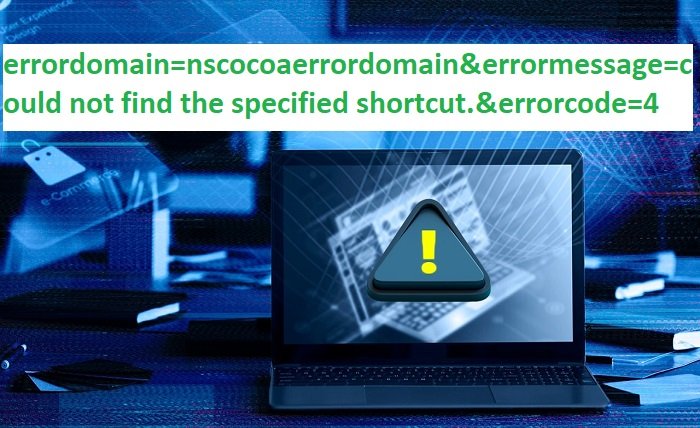Errors are an integral part of the human experience, influencing various aspects of our lives and work. This blog post delves into the concept of errors, exploring their nature, impact, and the lessons we can learn from them. Errors Those dreaded red squiggles, blinking notifications, and cryptic codes that bring our digital world screeching to a halt. They can be infuriating, confusing, and leave us feeling helpless. But fear not! This blog post delves into the world of errors, explaining their types, causes, and, most importantly, how to tackle them effectively.
What is an Error?
An error is a deviation from accuracy or correctness. It’s a natural occurrence in decision-making, perception, and action that can lead to unexpected outcomes. An error, in its simplest form, is a deviation from what’s expected or intended. In the digital realm, it signifies a hiccup in the process—a mismatch between what you try to do and what the system can understand or accomplish. These errors can manifest in various ways, from typos in a document to system crashes that bring your computer to a standstill.
Types of Errors
Errors can be categorized into several types, such as human error, technical error, and systematic error, each with its own unique characteristics and implications. The digital world throws a variety of errors at us, each with its own story to tell. Here are some common types:
- Syntax Errors: These grammatical mistakes in code prevent programs from running as intended. Imagine writing “you are beautiful” as “you are beautiful”—the s system wouldn’t understand it!
- Logical Errors: The code runs without crashing but produces incorrect results. Like following a recipe that calls for sugar but uses salt instead, the cake won’t be quite right.
- Runtime Errors: These errors occur during program execution, often due to unexpected situations like trying to divide by zero—a mathematical no-no!
- Hardware Errors: These stem from physical malfunctions in your device, like a faulty hard drive causing data corruption.
- Network Errors: Issues with your internet connection, like weak Wi-Fi or server overload, can lead to network errors when trying to access online resources.
Why Do Errors Occur?
Errors can arise from various sources:
- Human Error: Simple typos, incorrect instructions, or misunderstandings can lead to errors. We’re all human, after all!
- Software Bugs: Even the most rigorously tested software can have hidden bugs that cause errors.
- Hardware Issues: Physical malfunctions in your device can lead to hardware errors.
- Network Problems: Unstable internet connections or overloaded servers can contribute to network errors.
The Psychology Behind Errors
Psychological factors such as cognitive biases, stress, and fatigue significantly contribute to the occurrence of errors. Understanding these can help in mitigating their frequency.
Strategies for Effective Troubleshooting
Don’t panic when you encounter an error! Here are some steps to troubleshoot effectively:
- Read the Error Message: Error messages often contain valuable clues about the issue. Pay close attention to the wording and any error codes provided.
- Search Online: The internet is a vast resource. Look up the specific error message and see what solutions others have found.
- Restart the System: A simple restart can often clear temporary glitches and resolve the error.
- Update Software: Outdated software might have bugs that have been fixed in newer versions. Keep your software updated.
- Seek Help: If the error persists, consult user manuals, online forums, or contact technical support for further assistance.
Errors in the Digital Age
The digital revolution has introduced new types of errors, particularly in software and data processing. These errors can have widespread consequences in our increasingly interconnected world.
Learning from Errors
Errors are valuable learning opportunities. Analyzing mistakes can lead to improved strategies, enhanced skills, and better decision-making processes.
Managing Errors in the Workplace
Effective error management in the workplace involves creating an environment where mistakes are openly discussed and addressed without fear of retribution.
The Role of Technology in Error Prevention
Advancements in technology, such as AI and machine learning, are playing a crucial role in predicting and preventing errors across various industries.
Embracing Errors in Innovation
Innovation often requires a trial-and-error approach. Embracing errors as part of the creative process can lead to breakthroughs and discoveries.
Conclusion
Errors, while often viewed negatively, are an essential part of growth and development. By understanding and managing errors effectively, we can turn them into stepping stones for success. Errors are a part of the digital landscape, but they don’t have to control your experience. By understanding the different types of errors, their causes, and effective troubleshooting strategies, you can tackle them head-on and keep your digital world running smoothly. Remember, even the savviest tech users encounter errors; the key is knowing how to deal with them effectively.
FAQ
Q: Can all errors be prevented? A: Not all errors can be prevented, but many can be minimized through proper planning, training, and technology.
Q: How should one react to making an error? A: It’s important to remain calm, assess the situation, learn from the mistake, and take corrective action to prevent future occurrences.
Q: Will errors always have an error message? A: Not always. Sometimes, an error might manifest as a program crash or unexpected behavior without a clear message. In such cases, using troubleshooting techniques like restarting the system or searching online for similar issues can help.





